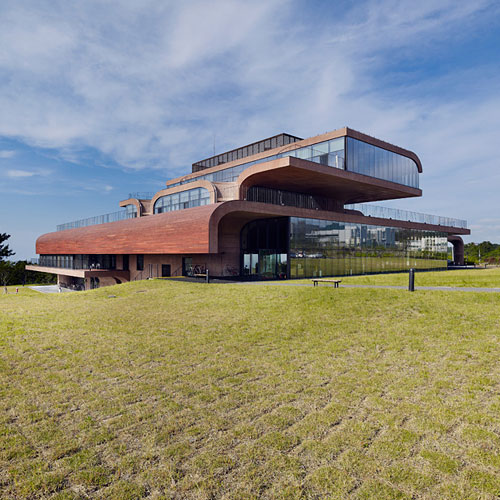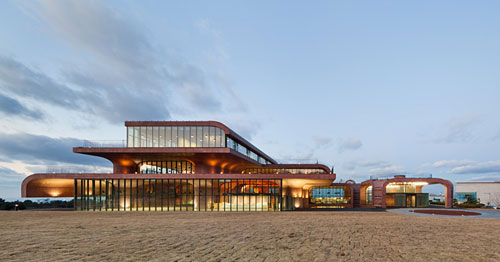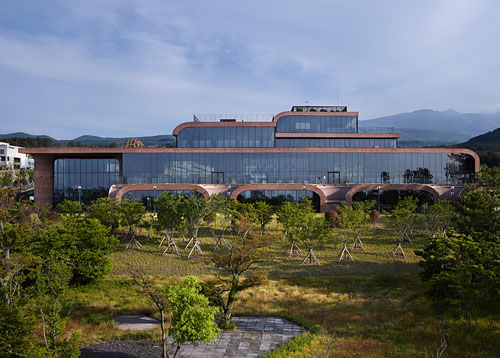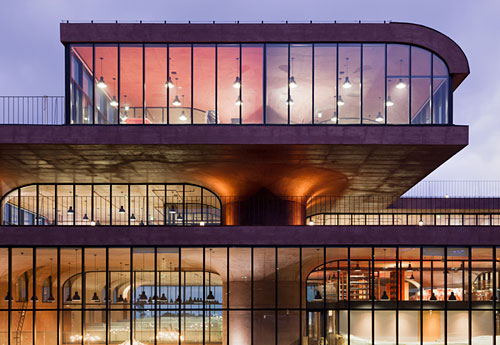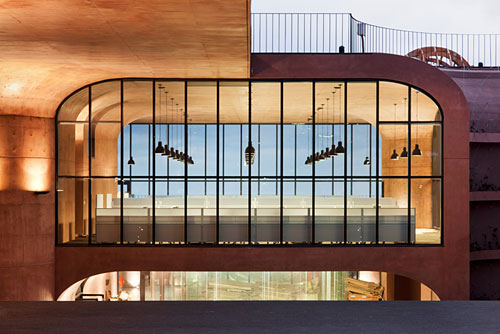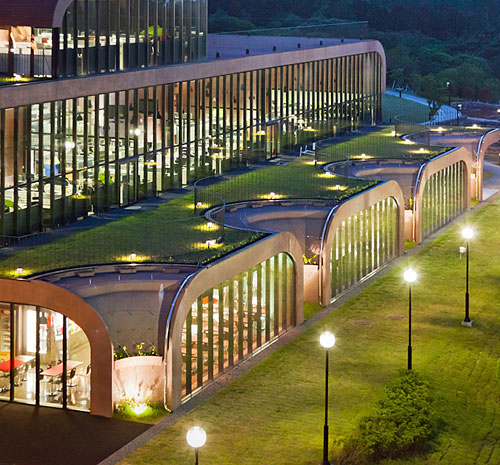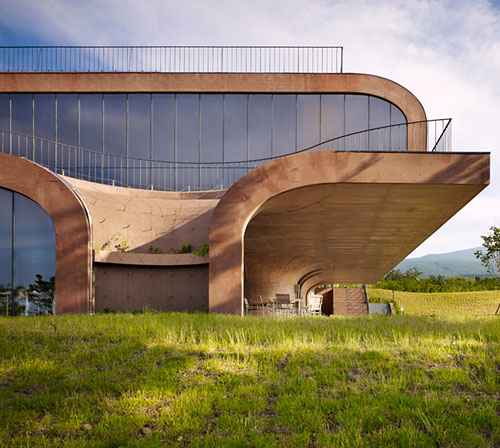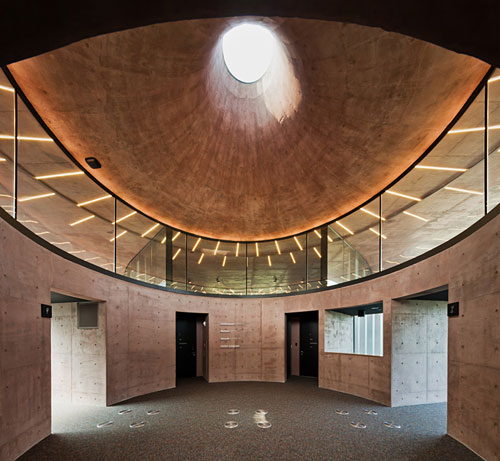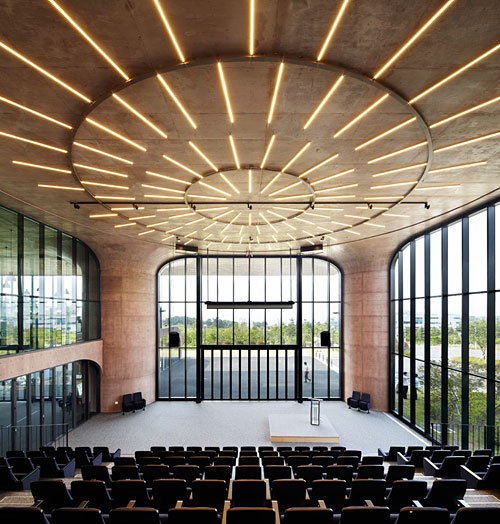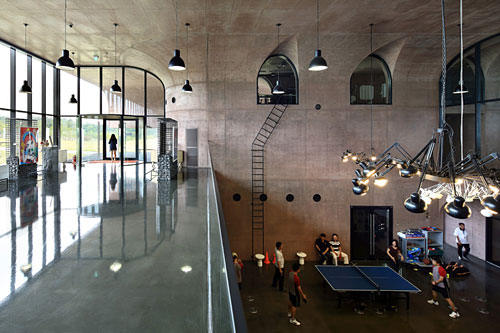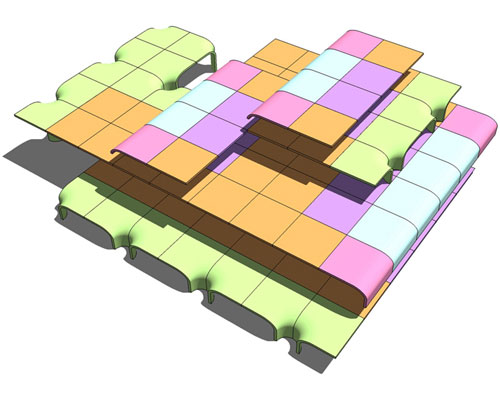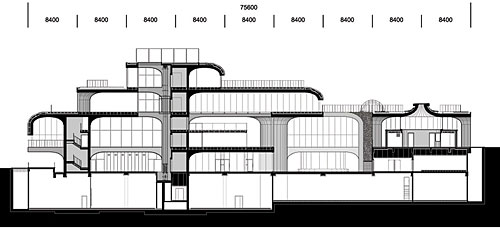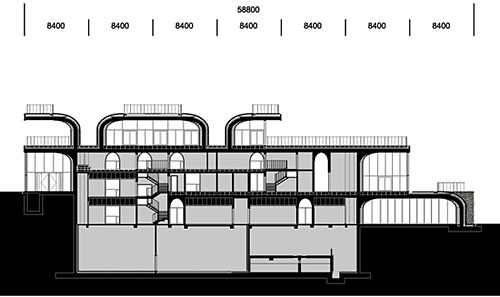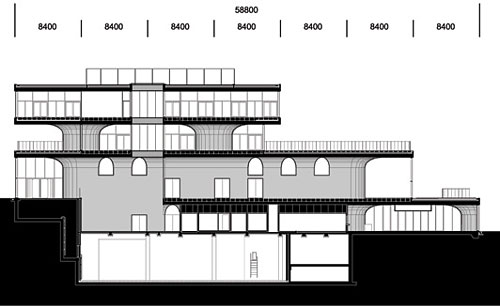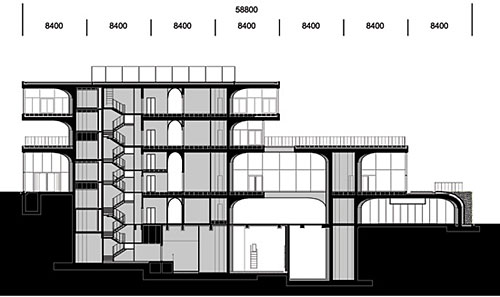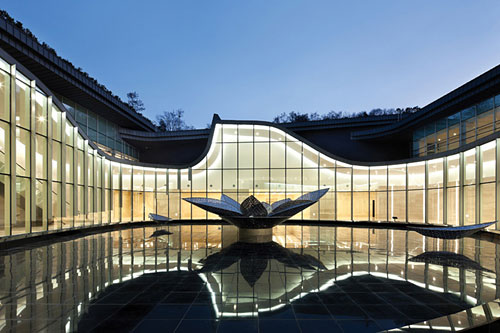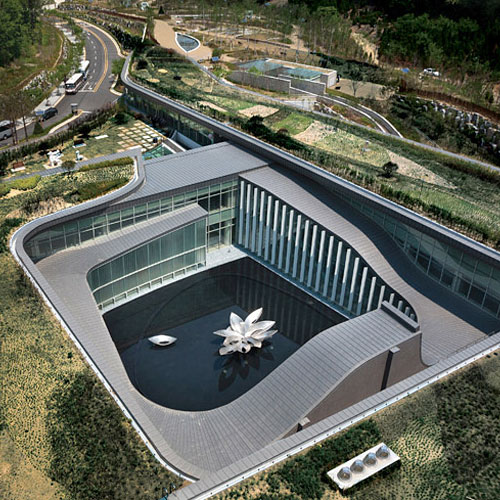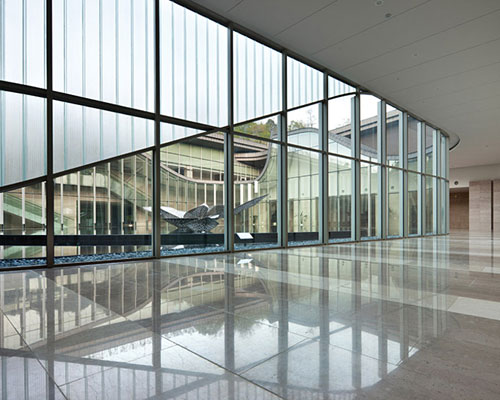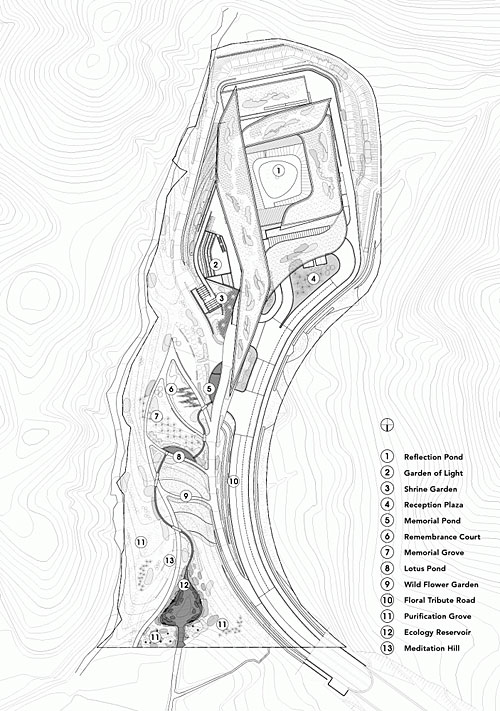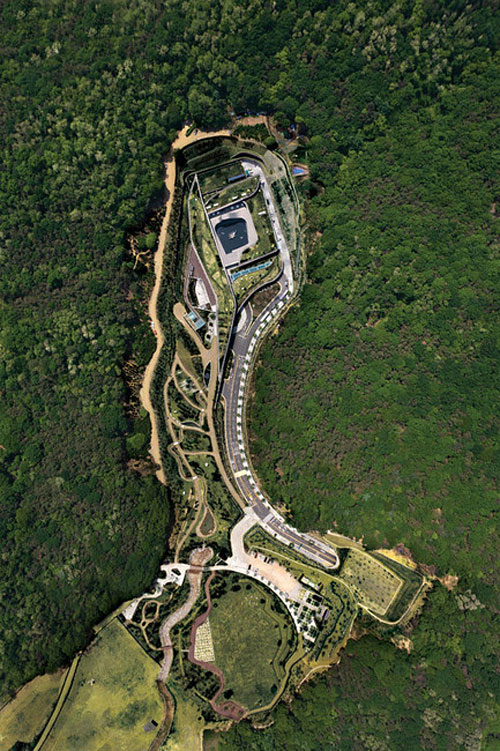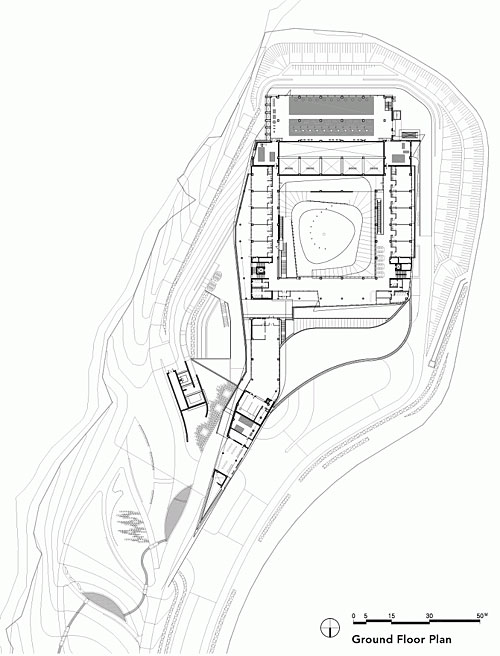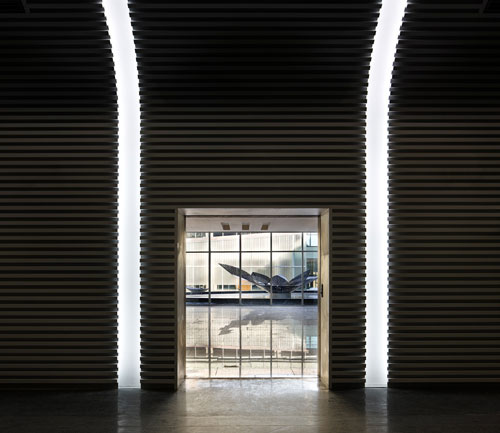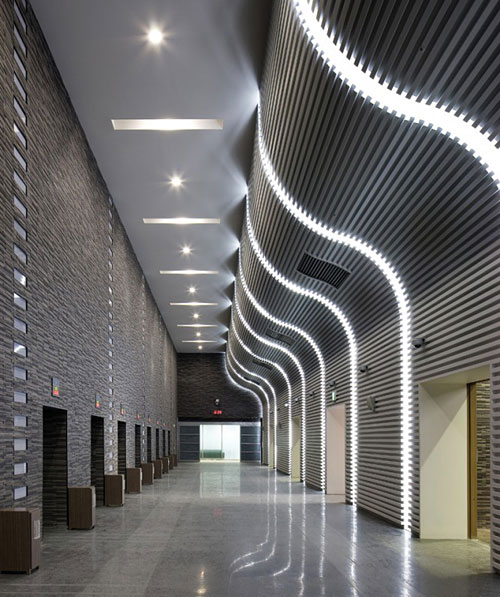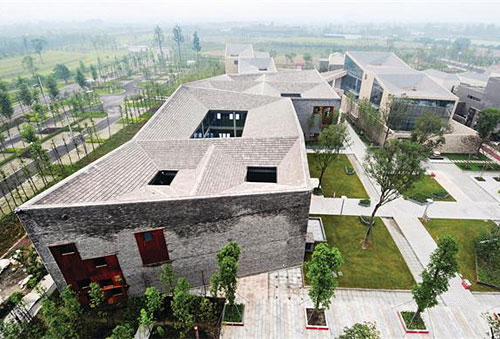
Sky Courts Exhibition Hall, located in the International Intangible Culture Park in Chengdu China, utilizes the internalized strategy of the traditional Chinese courtyard house to create a variety of aggregated exhibition galleries within one building. Broken up into a series of variably scaled halls wrapped around seven courtyards, the structure creates a range of open spaces inside the deep floor plan. This ‘packed’ and ‘wrapped’ internalized organization has both spatial as well as environmental benefits to the building.
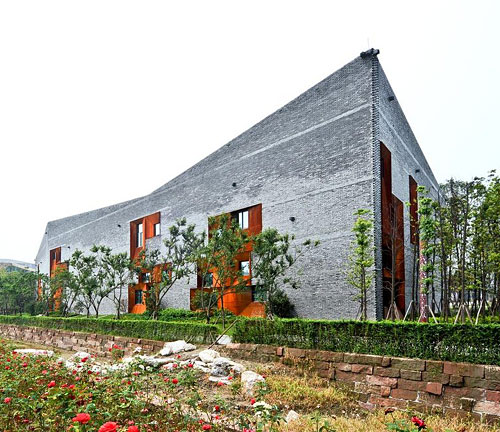
Spatially, the aggregation of courtyards within the larger building complex becomes a network of spaces linked together by multiple paths, producing an exhibition hall that is at once open and sub-divided. The sequence through these precincts creates a series of layered spaces where one can view from one courtyard to another and another—seeing from inside to outside to inside again. 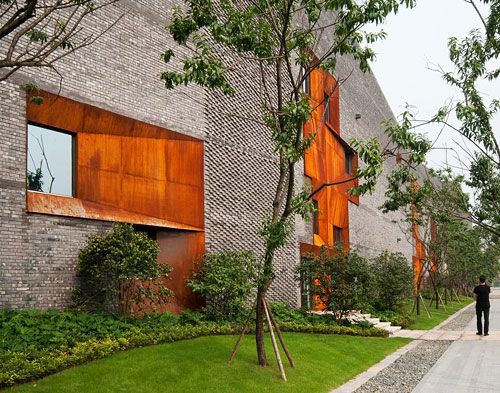
The center of each courtyard maintains a pure rectilinear geometry, while the overall perimeter of the building accommodates the irregular site boundaries. The roof geometry consists of a series of inward sloping roofs. The roof profile at the perimeter varies to create peaks and valleys. Alternating inclinations of the major ridge lines produce a hyperbolic ruled surface for each roof plane. The use of the ceramic roof tile seizes the tolerance between each tile unit to negotiate the non planar roof condition.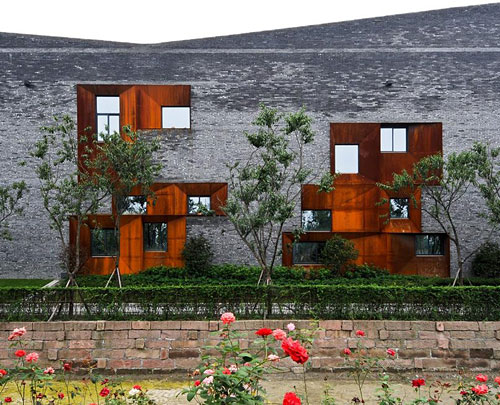
Environmentally, several passive energy strategies (cross ventilation, thermal mass, & daylighting) were developed as integral with the design strategy. In order to create a passively cooled building (there is no active cooling in the building), it was critical to capitalize on cross ventilation through and up the courtyard spaces. Perimeter fenestration clusters with operable windows were positioned on the perimeter wall to create cross ventilation through the operable sliding doors of the courtyards. 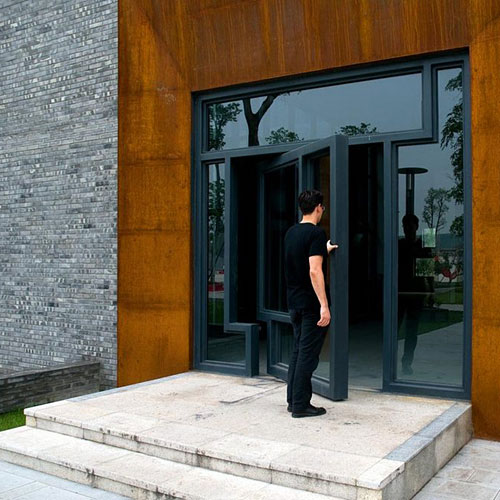
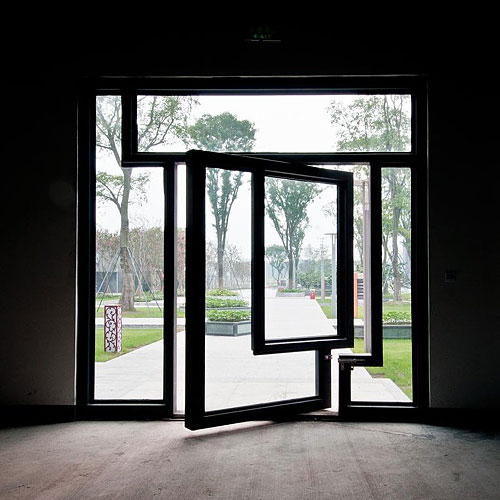
The concrete and brick infill walls create significant thermal mass to regulate temperature swings throughout the day. Furthermore, the configuration of spaces around multiple courtyards creates abundant daylight, reducing the need for electric lighting during a significant portion of the day. The daylighting and passive cooling strategies inherited from the traditional courtyard house are re-deployed in this contemporary context.
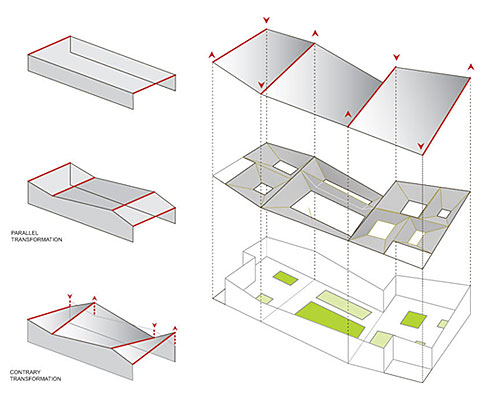
The perimeter walls of the structure vary in height from 11 to 15 meters and are made from locally produced grey brick. The brickwork is detailed to emphasize the tectonics of the brick as a building module as well as the oblique geometries of the building. Each brick is oriented in the same direction, regardless of the oblique angle of the perimeter walls. This creates an oriented texture such that the west and east facades are smooth while the other faces have a serrated quality.
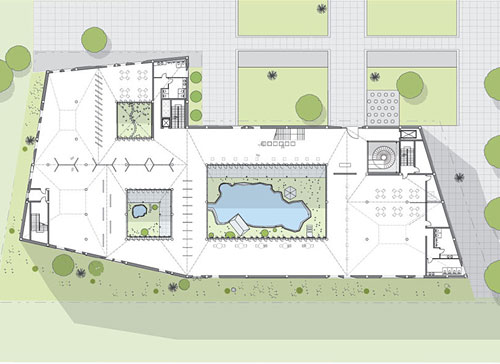
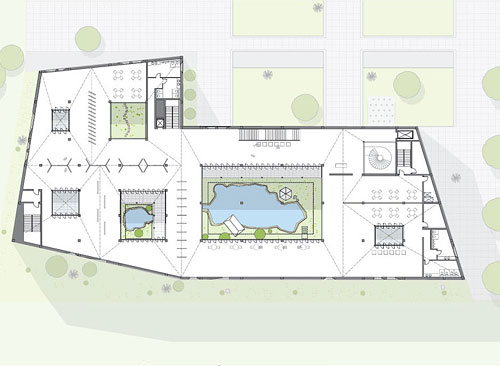
The windows and exterior doors are clustered on the facades to create a larger figural composition than each individual window can make in such a large internally oriented structure. Using economical and typical window and door sizes, these apertures are packed together using facetted Corten steel ‘window surrounds.’ 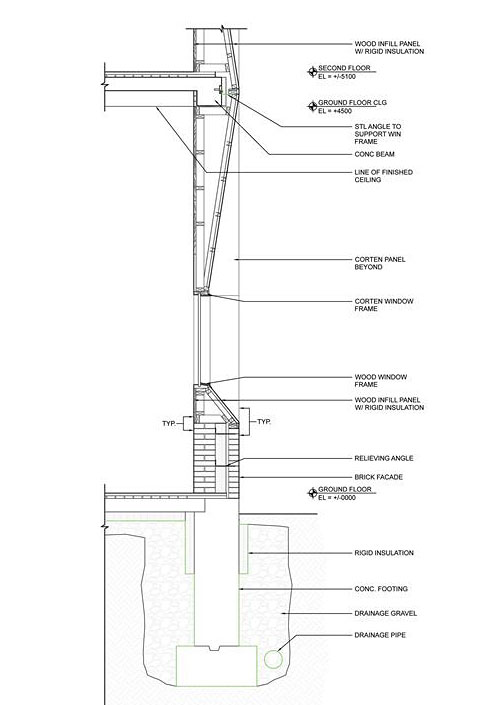
The figural surrounds negotiate between the scale of a window and the scale of the large exhibition hall, providing an intermediate scale that approaches the tactility found at the level of the masonry detailing. Using local construction strategies, materials and techniques to create a simple but culturally resonant project on the site, the overall effect is an Exhibition Hall which fits into the Chengdu building context, learns from the context’s heritage and provides a unique contemporary, flexible and sustainable space for International Exhibitions.
Project Credits
Chengdu Skycourts, Chengdu, China
Client : Chengdu Quingyang SCD
Architect : Höweler + Yoon Architecture, Boston—Meejin Yoon, Eric Höweler (principals); Meredith Miller, Ryan Murphy, Parker Lee, Jennifer Chuong, Casey Renner, Chua Matthew, Nerijus Petrokas, Zi Liu, Saran Oki, Cyrus Dochow, Thena Tak, Yushiro Okamoto, Jeremy Jih, Buck Sleeper, Lisa Pauli, Lizzie Krasner (project team)
Size : 67,000 square feet
Cost Withheld
Photograph : Yihuai Hu
Höweler + Yoon Architecture

